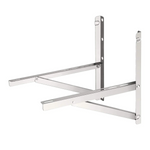
Viruses... Scary “creatures” that can sometimes make our lives miserable. But what are they? According to Live Science, viruses are “microscopic parasites, generally much smaller than bacteria. They lack the capacity to thrive and reproduce outside a host body.” Some can’t resist our bodies and love having parties inside them!
There are all kinds of viruses seeking for hosts this season, but one we always really need to pay attention to in the U.S. is the influenza virus (also known as the “flu”). Let’s take a look at some data.
2019-2020 Flu Season
Influenza has been around the U.S. for quite a while. Its main symptoms are: dry coughs, severe aches all over, fever, chills and sweats, and they come fast in comparison to a cold. It affects thousands of people every year.
The latest preliminary estimates from the CDC are as follows: “So far, 14,000 people have died and 250,000 people have been hospitalized during the 2019-2020 flu season.” This is definitely something we should be aware of and take all the precautions that we can.
During the week ending on February 15, 2020, there was a very high ILI activity in most states (CDC Data):
In regards to the spread, it’s widespread in the great majority of States (CDC Data):
Who’s at High Risk?
According to Mayo Clinic, the people who are more at risk of serious complications due to the flu, include:
- Young children under 5 (especially those under 12 months of age), and people ages 65+.
- Pregnant women.
- People with weakened immune systems.
- People with severe obesity (IBM 40 or higher).
- People with chronic diseases (such as asthma, or diseases in heart, kidney, liver, and diabetes).
How to Prevent the Flu
Although we can’t guarantee that you won’t get the flu this season, we can give you some easy tips that could help you prevent it. It’s always better to prevent than to cure, and most times less expensive!
1. Soap and water, soap and water, soap and water...

Wash your hands frequently with soap and water for 15 to 20 seconds. This could help kill the virus if you have come in contact with it.
How about alcohol-based sanitizers? We all love using them. However, according to an article from Reuters, in a recent study, it was shown that these take longer to kill the flu virus than actual soap!
| “Flu virus in wet mucus from infected patients wasn’t destroyed after two minutes of exposure to sanitizer - it took about four minutes for the virus to be completely deactivated. That compares to just 30 seconds with handwashing.” Reuters |
What if you don’t have soap around?
As stated by the CDC, if you don’t have soap around, “using a hand sanitizer with at least 60% alcohol can help you avoid getting sick and spreading germs to others.” Just note that you’ll need to rub it until your hands are dry and wait for a bit. (More information on how to use soap and sanitizers to wash your hands here.)
2. Well-cooked, please!

Not all kinds of influenza are transmitted through poultry, but make sure to cook your foods thoroughly. In regards to avian influenza, the WHO (World Health Organization) states: “The H5N1 avian influenza virus is not transmitted to humans through properly cooked food. The virus is sensitive to heat. Normal temperatures used for cooking (so that food reaches 70°C in all parts) will kill the virus.”
3. Boost your immune system.
If you happen to catch the flu, you’ll stay safer if you have a strong immune system. As mentioned by the Harvard Medical School, these are some actions you can take:
- Eat your veggies and fruits.
- Don’t smoke.
- Have a regular exercise routine.
- If you’re going to drink alcohol, do it in moderation.
- Get enough sleep.
- Reduce stress in your life. Meditation, yoga, mindfulness are great ways to do it.

On the other hand, Today.com, recommends these 17 foods to strengthen your immune system: Ginger tea, oranges, water, greek yogurt, blueberries, ginseng tea, tomatoes, wild salmon, dark chocolate, broccoli, extra-virgin olive oil, green tea, spinach, whole-grain bread, eggs, garlic, and apples.
4. Get a flu shot.
According to the CDC, a flu shot is "the most effective way of preventing the flu". Nonetheless, there are some people who shouldn’t get a flu shot: those under 6 months of age, or people who have had complications with flu shots in the past. Please talk to your doctor before actually getting your shot, and ask about his/her recommendation based on your medical record.

5. Keep safe humidity levels at home.
Did you know that most viruses are in love with low humidity levels? That’s why it may be more common to catch the flu during the winter season, as relative humidity levels tend to go down in various States. Also, using a heater may have been drying out your home’s air. So, what to do?
If you’ve got indoor relative humidity levels below 30%, we recommend that you use the help of a humidifier: the TOSOT Ultrasonic Cool-Mist humidifier.

Features: Top-fill tank, multiple mist modes, sleep mode, aromatherapy, easy to clean.
| “You may be safer from the flu in a humid room than in a dry one, according to a new study from researchers at the Centers for Disease Control and Prevention.” livescience.com |
So, remember our 5 easy tips for flu prevention this season: wash your hands often, cook your food thoroughly, boost your immune system, get a flu shot if necessary, and use a humidifier at home.
Now, watch out! We’re not telling you to increase your indoor relative humidity to levels higher than 55%-60%. Very high humidity levels, on the other hand, will attract creepy creatures, such as mold and dust mites. If that’s your case, you’ll need the opposite: a TOSOT Dehumidifier!
We wish that you and your family stay safe always.
You may also like:
3 indoor allergens that love humidity
Using a dehumidifier in winter
6 Steps to winning the battle against mold
Want more tips like these?
To stay updated with all of our tips, all you need to do is sign-up to our newsletter:
Use information at your own risk: The information presented is intended for educational purposes only and is not intended to be a substitute for professional advice, diagnosis or treatment. Never disregard professional medical or home improvement advice. The information and suggestions should be discussed with a professional. You are responsible for independently verifying the information if you intend to rely upon or use it in any way. You use all information at your own risk.







